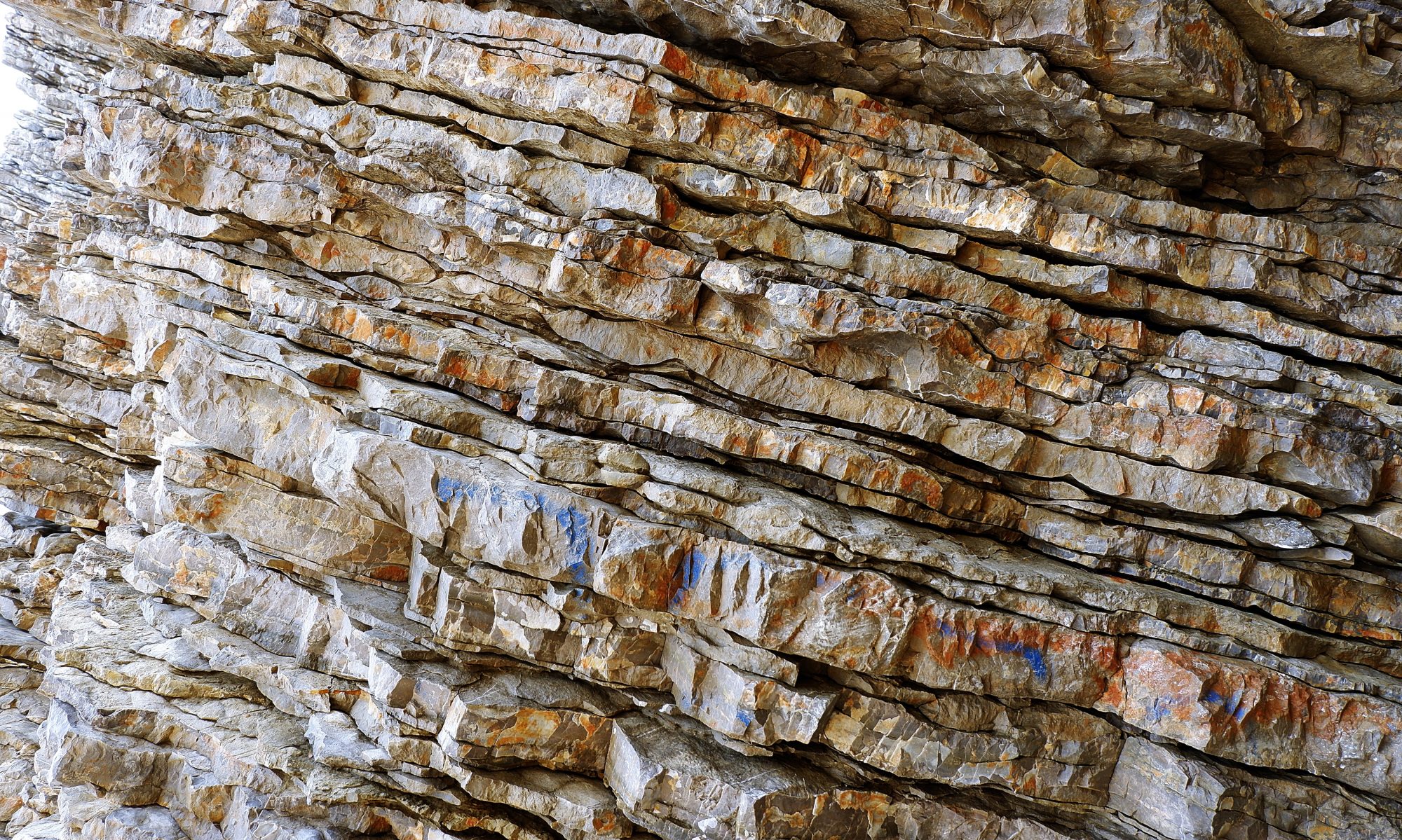Luminescence dating relies on two parameters:
- the total accumulated radiation dose since the sediment was last exposed to light or heat, and
- the annual rate of radiation exposure (up to a 20- to 30-cm distance from the sampling site).
The optimal grain size is 150 to 250 µm (fine sand). Unlike some other dating techniques, luminescence dating depends on the contextual location (20 to 30 cm) where a sample is retrieved.
For sampling, a simple guideline is to target homogeneous sediment within a 20- to 30-cm radius (length of a hammer) of where you wish to retrieve a sample. That means you should stay away from major erosional discontinuities or sedimentary boundaries. Organic-rich or bioturbated layers should be avoided, as well as any zone of chemical alteration (such as the A, E, and B soil horizons). Once you have found a proper setting, clean the surface (by removing about 5- to 10-cm from the exposed surface) and insert an opaque tube horizontally (or following the bedding). You may need to put an object over the sampling tube to cushion the blow. If the diameter of the tube is large (>1 inch) and the sediment is loosely cohesive, place some kind of plug (such as a Styrofoam disk) inside the tube, against the sediment to keep the sediment properly oriented inside the tube.
If the sample location is heterogeneous, you can still sample for OSL dating. Here, you again clean the exposed surface (removing 5 to 10 cm) and insert a tube. In addition, you must collect (in a clear zip-lock bag) a representative portion (25 g) of sediments from each heterogeneous unit within a 20-cm radius, and include a detailed layout (distances, ±cm) for each element. The tube is for OSL dating, whereas samples in the additional zip-lock bag(s) are used to better assess the dose rate contribution from each heterogeneous unit. When the location is homogeneous, the dose rate is assessed with material from the opaque tube itself.
For each location site, detailed information is required including the sampling depth (±cm), elevation above mean sea level (±100 m), and longitude and latitude coordinates (±degrees). For the sampling depth, it is important to note if the present-day surface is the original (i.e., whether there was significant erosion). If the landscape was “recently” modified, I will need to know this; it has an impact on the depth as well as on the groundwater flow. If you know the distance of the sample from the local height of the groundwater table, that is also beneficial. If the sample is dry or is seasonally or permanently saturated with water, let me know. If it is not too much work, it would be worth pulling up the meteorological log for the area, if there is one. From it, assess what was the precipitation in the days that preceded the sampling, as well as to get a feel for the yearly record. Water content is an important parameter in the age equation, yet it is next to impossible to quantify precisely. A variation of 1% in water content carries an age variation of approximately 1%. What I need to know is the long-term average that prevailed during the entire burial. The current condition is easily affected by recent meteorological events. The same applies to burial depth (the sample was at the surface once upon a time). Information on how fast the sedimentary unit was buried and how much water was present during burial (e.g., whether 0, 50 or 100% of the available pore space was occupied by water) is of help in better refining the age. Even if it is a “guesstimate,” it is better than to assume that what I see today prevailed for all time.
Sampling can be done with an opaque tube, 1 to 2 inches in diameter, 8 to 10 inches in length, made of strong PVC or copper or other metal. PVC is inexpensive, but copper or metal will easily slice through compact or cohesive sediment. A large-diameter tube also slices more easily. If the sedimentary unit is thin, say 10 to 20 cm, it is better to take a smaller tube (0.5 to 1 inch) in the middle of the unit. If you think that this would produce an insufficient amount of fine sand (I need at least 0.5 g), you can retrieve two to three small tubes side by side. If we have insufficient material for dating, we can rely on the second tube and combine it with the first. Always make sure the tube is completely filled with sediment before removing it from the unit. Immediately after sampling, cover both tube ends with many layers of duct tape or a tightly fitting cap (secured with duct tape). If the tube is partially filled, the sediment might move around during transport or handling, which may affect sample integrity and could mean your sample can not be analyzed! Only the inner core of the tube is used for OSL dating because sediment at both ends is exposed to light during sampling. If for some reason, you are unable to completely fill the tube, you may backfill the tube with sediment from the same unit. However, make it abundantly clear which portion was backfilled and how deeply because all this sediment has potentially been exposed to sunlight.
Coring
I do not have firsthand experience with core. For luminescence dating, the core will need to have an opaque liner to allow you to retrieve a core of sediment without exposing it to light. At a minimum, a 1-inch diameter core is required, but larger sized core is preferred.
Please contact the laboratory before field operations are planned and before sampling has been conducted so we can help ensure you are collecting representative cores that can be analyzed by our lab.

